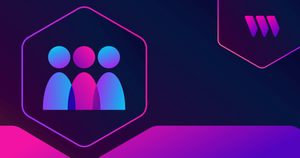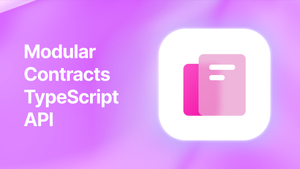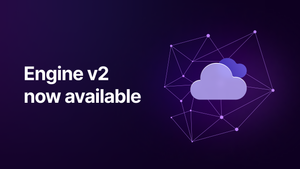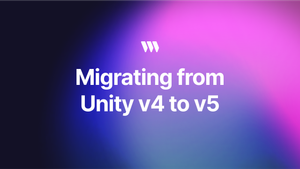
Learn more about what a DAO is, how it works, and what the different types of DAOs are (with examples for each).

Most organizations, governments, & societies work the same way: a small group of people decide how its population will function to achieve collective goals. But the concentration of power at the top, lack of transparency in decision-making, and hierarchy-driven bottlenecks are age-old issues that we haven't yet been able to solve.
Enter DAOs: an emerging governance model in which a large group of participants collectively share ownership and decision-making power — operating on a blockchain to use smart contracts & token-based governance so that it is able to run without a central authority.
But what exactly is a DAO? How do they work? And what are the different types of DAOs? Any examples?
In this blog post, we will demystify everything you need to know about DAOs: what they are, how the many different types of DAOs work (with examples), and how decentralized governance is being used today.
A decentralized autonomous organization (DAO) is an entity that operates on a blockchain — using smart contracts and token-based governance to enable participants to make decisions and contribute to its activities, without a central authority.
Instead of having a small centralized management team, DAOs rely on their members to vote on proposals and collectively make decisions to drive the organization toward a commonly agreed goal or purpose.
Each DAO member’s voting power is proportional to the amount of the DAO’s native token they own.
While the concept of DAOs dates back to the early 90s, we saw their first real-life implementation after Vitalik Buterin and his co-founders launched Ethereum in 2015.
DAOs leverage smart contracts and blockchain technology to power this permissionless setup. In doing so, they enable the following key facets:
1. Trustless systems: A DAO operates trustlessly at its core, meaning, it works without having to trust a human or a centralized party. The soundness of smart contracts and their code form the heart of a DAO.
2. Contribution-led model: In DAOs, members’ titles, qualifications, and past experience take a back seat. They capture value in the DAO for their contributions and participation which form an on-chain reputation.
3. Reputation economics: DAO rewards contributors and participants with incentives including voting rights. Similarly, bad actors face a slash or a blacklist for any wrongdoings. So, on-chain reputation is key to maintaining the integrity of the DAO.
Now that you know what a DAO is, let’s dive into how they work.
Every DAO operates differently, but we can narrow the way they work down to 3 stages:
DAOs begin with like-minded individuals sharing a common goal, such as managing a protocol. They establish operational rules including voting quorum, fund allocation, token distribution, and incentive structures.
These rules are then coded into smart contracts to automate processes.
Once the DAO is formed, DAO members collectively make decisions alongside its founders and developers.
All actions go through a proposal and voting process. Members submit concise proposals relating to the DAO's goals, including the action, team, budget, timeline, expected outcomes, and contingency plans. Following a discussion period and revisions, members vote on the proposals.
DAO members have no job profile or duties to follow but they are expected to contribute in a meaningful way. These contributions are tied to incentives and penalties, depending on the utility of the contribution which further builds an on-chain reputation.
DAOs often use bounty boards to systemize contributions in a permissionless way.
DAOs have a plethora of possibilities. Companies, governments, and academic institutions can leverage DAOs for a smoother, people-centric workflow. Some of the prominent types of DAOs include:
Protocol DAOs help democratize decision-making for platforms like decentralized exchanges (DEX), lending protocols, etc. Members of these DAOs come together to propose, discuss, and decide on the changes and updates for the DAO using a trustless voting system.
Here are some examples of protocol DAOs:
ENS DAO
Members submit 'Requests for Proposals' (RFPs) to suggest modifications, updates, or actions to the DAO, adhering to pre-established quorum and approval needs. The ENS DAO treasury funds the accepted proposals.
MakerDAO
MakerDAO governs DAI, a USD-pegged stablecoin, with the help of MKR governance tokens. MKR holders manage the supply and liquidity of DAI by a mint or burn process. They also determine collateral for lending and borrowing and decide the DAI savings rate i.e. interest paid for locking up DAI, etc.
Anyone can swap their ether (ETH) or other crypto tokens and buy MKR on DEXs like Uniswap to participate in MakerDAO.
Investment DAOs are decentralized venture capital platforms where stakeholders pool their digital assets and resources to invest in early-stage startups.
Here are some examples of investment DAOs:
Orange DAO
Orange DAO comprises 1300+ members who come together to accelerate web3 development. The 'Orange Gem’ NFT proves DAO membership and the $ORANGE token incentivizes participation.
The DAO runs the Orange Fund and the Orange Fellowship program to support developers, founders, and builders in web3.
The LAO
The LAO is a venture capital fund on the Ethereum blockchain fueling the development of new projects. It is currently funding 30+ startups with a pool of over $30 million.
Each DAO member’s LAO tokens represent their voting rights., which they use for on-chain voting related to funding proposals, investments, due diligence, and more.
Service DAOs are like traditional consulting firms. They source web3 talent, conduct trustless audits, and develop DAO tooling, etc in a decentralized manner.
Here are some examples of service DAOs:
IndieDAO
IndieDAO is ‘your design & dev team on speed dial’. It is a Service DAO that enables seamless collaboration between clients and service providers in design, app development, and NFT projects.
The community governs the DAO in terms of project work approval, contributor incentives, and more.
SuperteamDAO
SuperteamDAO is a collective of designers, researchers, developers, and other professionals that help Solana-based projects with growth.
They offer bounties, and grants, and run community advisory boards to mobilize talent for projects and founders. Currently, the DAO governance operates without a token.
Media DAOs are community-run media platforms that reduce censorship and advertiser impact. This empowers creators to own their content and generate revenue directly from their audience.
Here are some examples of media DAOs:
BanklessDAO
Bankless DAO acts as a single body for media professionals to work together to drive the adoption of cryptocurrency and decentralized finance (DeFi).
Members ranging from reporters to media houses coordinate to inform, educate, and spread awareness about web3. Bankless DAO puts decision-making into the hands of its members who use $BANK tokens to exercise their rights.
RugDAO
RugDAO governs RugRadio: a fully decentralized platform for creators and audiences to own their media and content. $RDAO is RugDAO’s blockchain-based governance token while the RugRadio Genesis NFT acts as a membership token.
Token holders decide the evolution of RugRadio, its rewards program, and future steps.
Social DAOs are virtual gatherings of like-minded people who interact, collaborate, and socialize to bring about a positive change in a specific sector.
Here are some examples of social DAOs:
Friends with Benefits (FWB)
FWB is a social platform and a DAO uniting 3000+ creators, thinkers, and builders who believe in the thesis of web3 and propagate the same.
FWB fosters creativity to supercharge web3 development by offering fellowships, and benefactor programs. They also have multiple subDAOs to aid in-person events.
Developer DAO
Developer DAO is the house for thousands of web3 developers. They collectively build web3 tools & public goods to onboard, educate, & support web3 developers. It uses $CODE as the governance token. Members earn $CODE for their contributions like moderation, creating learning resources, sponsorship acquisition, etc., thus gaining additional voting rights.
Now that you know the different types of DAO, how do you create one? Let’s check that out.
Establish a clear, shared mission that will guide the DAO's activities and decisions. This mission can be anything from managing a decentralized lending platform to funding open-source projects, or even operating a community-driven art platform.
This shared purpose serves as the guiding light for the DAO, directing all its activities and decisions.
Set the DAO's rules, including governance structure, token distribution, and voting mechanisms.
Create a strategic roadmap outlining the DAO's long-term goals, milestones, timelines, and key performance indicators (KPIs). Finer details like a quorum for proposals and revenue splits make the DAO creation process easier.
Develop a smart contract to govern the DAO's operations and execute actions such as voting, token distribution, and fund allocation. The integrity of the smart contracts dictates the life of the DAO.
thirdweb's library of smart contracts makes this all much easier. To learn more, get started with our guide to start a DAO:
Involve the community early for feedback and to attract new members. A robust, engaged community is vital for a successful DAO. An efficient front-end for DAOs like Tally makes lives easier for members.
Airdrops, bounty programs, and scholarships are some initiatives that attract newer members to the DAO which increases decentralization.
Hand over control to the community. The DAO's actions will be guided by its members' collective decisions. Members now become the key drivers of the DAO, guiding it according to the shared purpose and principles.
This is where the soundness of the DAO token, its economics, and the governance contract come into play.
To conclude, DAOs are an organization run by people who share a goal and operate as a single entity. They use on-chain voting to transparently decide on the next steps for the DAO giving a say for every member of the DAO.
The decentralization of power and collective ownership are the basic tenets of DAOs.
Understanding DAOs is integral for builders and communities to create a web3 ecosystem that’s truly decentralized.
We hope this blog has helped you better understand what DAOs are, how they operate, and their different types.
If you have any questions, join 40,000+ other builders in our Discord community or reach out to the team directly for more info on how to get started with DAOs & web3 apps as a whole.
And if you want to build web3 apps or your own DAO, get started with thirdweb’s web3 tools and SDKs — they’re free!
A DAO is an internet-native organization that people with a common goal use to work as a single entity. DAOs remove hierarchy and central authority. Instead, they offer collective ownership to the members who use their voting rights to manage the DAO.
States like Wyoming, Tennessee, and Utah recognize DAOs and provide an option for DAOs to register as LLCs (limited liability companies). They intend to offer DAOs official legal recognition. Other states are still assessing a DAO’s legality.
DAOs, depending on their purpose, generate revenue in different ways. The common ones are transaction fees, investment returns, and service fees.
The future of DAOs likely involves wider adoption. More countries may recognize DAOs as legal entities and corporations embrace the DAO structure. For this, there’s a dire need for more DAO tooling and frameworks, better user experience, and smoother user onboarding.
Traditional organizations or companies function through a hierarchy and central governance. In contrast, DAOs operate without such hierarchy, and rely on transparent, on-chain voting for decision-making. Unlike companies where select individuals or a board possesses ownership, in DAOs, each token-holder owns a stake, democratizing the organization.
Pros:
Cons:


All new Engine deployments from the thirdweb dashboard will be on v2. For existing cloud-hosted Engines, please request a version upgrade in the dashboard. (We're making upgrades self-service very soon!) What's new? The worker architecture in Engine v2 was redesigned with maximum onchain throughput in mind.
Sep 6, 2024 2 min read
Build web3 apps easily
Deploy smart contracts and build dApps on 700+ blockchains, in minutes.